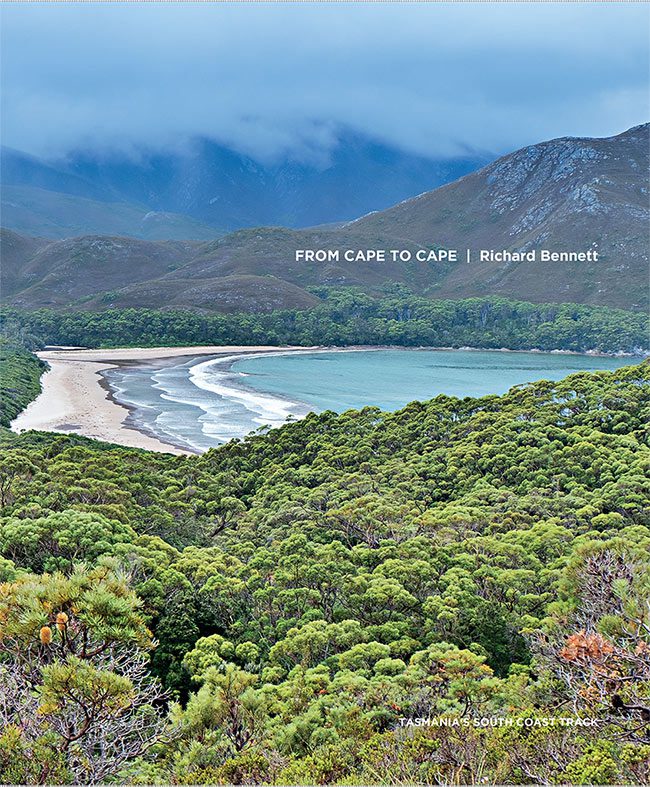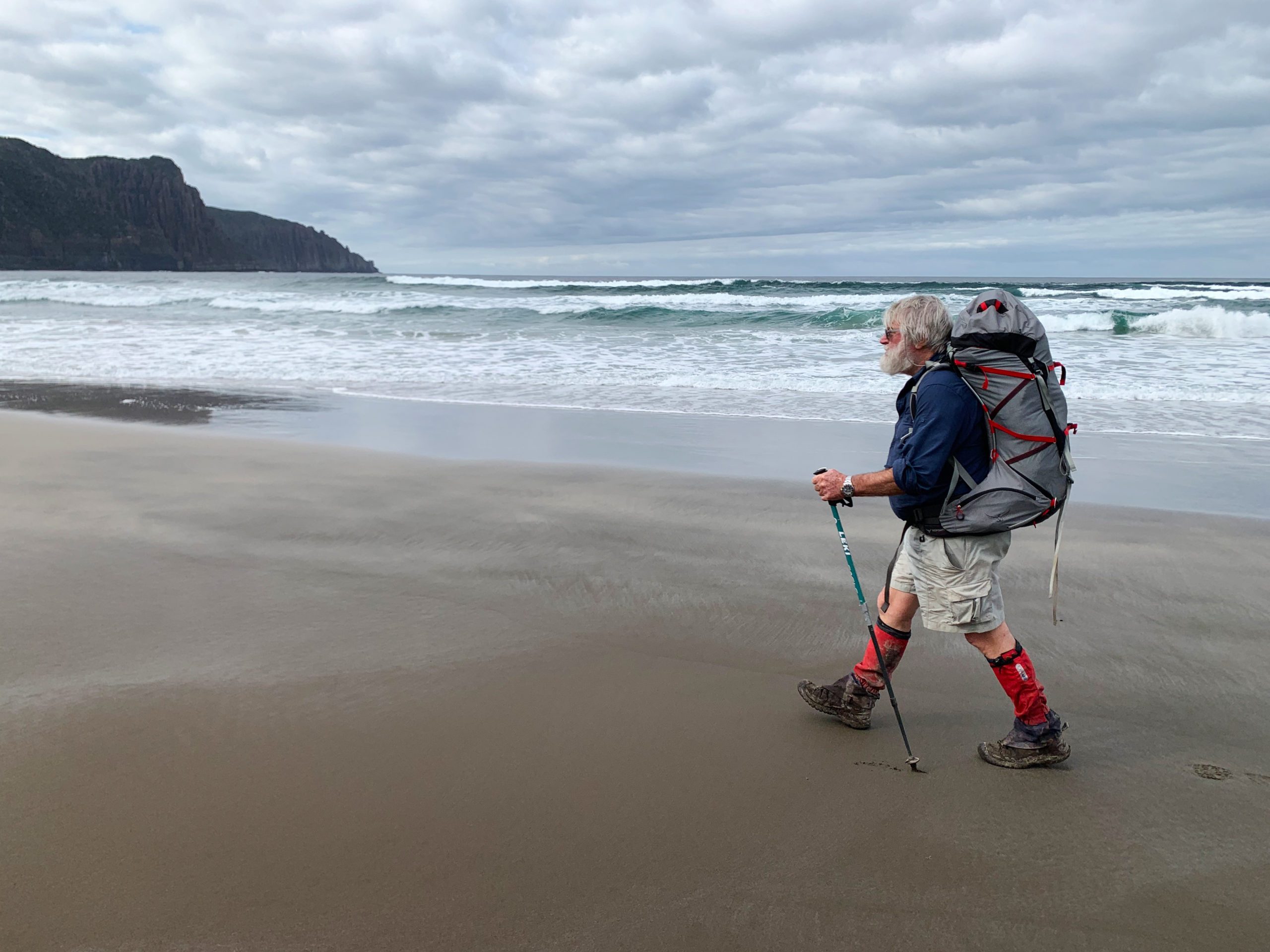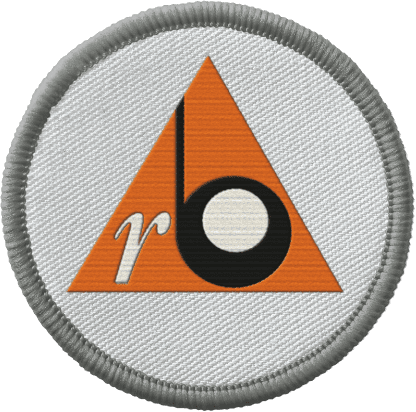
Packing for a Bushwalk in South West Tasmania
Tasmania’s South West Wilderness is one of Australia’s most remote and inaccessible areas. It is Tasmania’s largest expanse of wilderness, with most of the area only accessible by foot, air or sea.
As such, whatever you take for an expedition, has to be carried. Weight, therefore, becomes a significant consideration. A heavy pack slows you down and diminishes your enjoyment. It is all about your power-to-weight ratio. And, as we age, our ability to carry a heavy pack diminishes. It becomes even more important to think carefully about what we take and minimise the weight of every item.
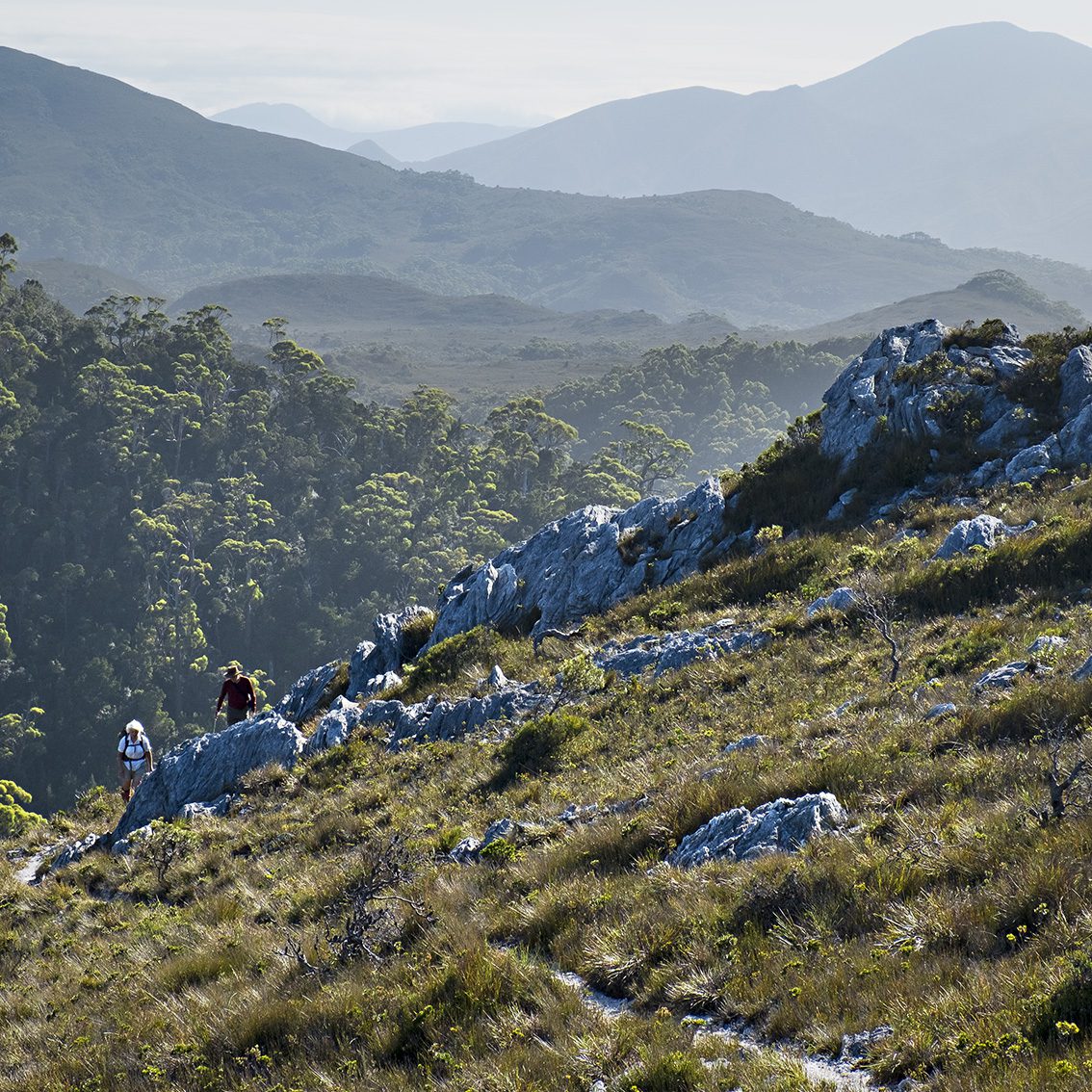
A weight reduction mindset
I have been walking in South West Tasmania for 60 years. In that time, the equipment has become more sophisticated and engineered to be lighter. But light equipment can only help so much. There is also a mindset that can make a tremendous difference to the weight of your pack and your enjoyment of the expedition.
I once saw a walker bring out a glass jar containing medication. The jar was heavy, and it contained perhaps 100 pills. I asked how many pills were needed per day, and the answer was one. Eight days – eight pills. 100 pills is eight times the number required. This walker did not have a weight reduction mindset!
If an average pack weighs 18 kilos and you multiply that by eight, you have a pack that weighs 144 kilos. It is obvious; I would have thought that one should work out what is required for each item for the duration of the trip and hopefully end up with a pack that weighs 16 kilos instead of perhaps 18. Although, after a lifetime of observing other walkers, I have learned that it isn’t obvious.
Take toothpaste for another example. When pre-planning my trip, I purchase a small tube of toothpaste and use most of it before the trip, leaving exactly enough in the tube to last me until the last day. Then I cut two centimetres off the handle of my toothbrush, thereby saving ten per cent of the weight of that item. If you can save ten per cent of the weight of every item in your 18-kilo pack, your pack will be 1.8 kilos lighter.
If you carry liquid containers, you have a choice between aluminium and strong plastic. Most people would not consider the weight consideration of these two similar items. The plastic bottle with the same volume is lighter than the aluminium. If you are unsure when making a choice, weigh both accurately and then decide. (My exception to this rule is medicinal whisky, which should not be carried in plastic; it simply does not taste the same. Choose the lightest aluminium flask for your tipple.)
Equipment – what to take
The remoteness of the South West Wilderness, along with the wildness of the weather and terrain, means that you have to pack for all eventualities. Hot, cold, wet, dry, injuries, illnesses, and everything in between.
Pack
Try several until you find one with a comfortable harness. Exterior pockets at the back and on top are helpful. Avoid side pockets, which will inevitably get caught in southwest scrub. I like to pack everything inside the pack. Gear hanging off the outside looks unprofessional, gets dirty, is easily lost and has an adverse effect on the carrying characteristics of the pack.
I put the stuff I will not need during the day at the bottom: a sleeping mat and a sleeping bag. Camp sandals are jammed in along the side. I keep the weight high in the pack because weight is easier to carry that way. The stuff I will need during the day is close to the top—lunch, mug, jacket, waterproof and camera gear.
Dry sacks
I have one large dry sack that I put inside my pack. Bushwalking packs are not waterproof; river crossings and rain can leech into your clothes and sleeping bag. I also keep my dry clothes in their own dry sack inside the pack to protect against dampness from the tent if it has been wet overnight.
Tent
Modern tents have evolved to be lightweight and efficient. Insect screens are essential to deter unwelcome visitors. Make sure your tent has adequate storm guys and tie it down securely. Tents have been known to blow away with the occupants inside! The first thing I do when I get into camp is put my tent up. It is a good habit to be prepared for unexpected rain. I look for a level spot where my head will be a bit higher than level. I place a small groundsheet on the ground and test it for a hip hole and any bumps. The groundsheet protects the tub floor from abrasion. After erecting the tent, I inflate my mattress and spread out my sleeping bag to loft the down.
Then it is ready for a brew and dinner. A highlight of the day is getting “into the scratcher” (my sleeping bag), warm and cozy, horizontal, and satisfied after a great day. I listen to the sounds of the sea and the wind in the trees above. I contemplate the blessing of a dry morning with a dry tent to pack and look forward to porridge with sultanas or dried blueberries with milk and dark brown sugar.
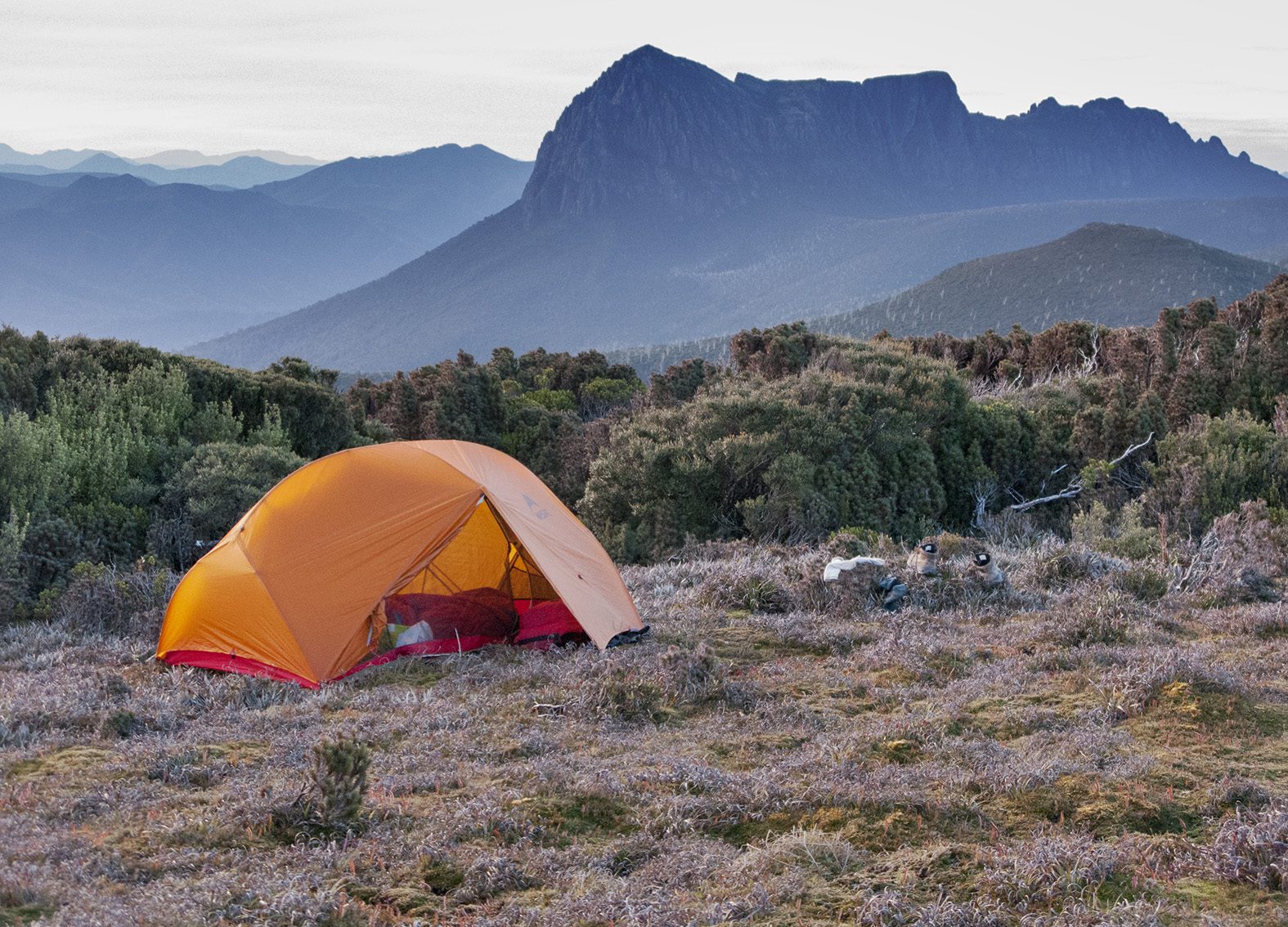
Groundsheet
Protect the floor of your tent by placing the groundsheet underneath. Trim the groundsheet to the size of the tent floor to save weight. After the tent is pitched, I tuck the edges of the groundsheet under the tent to prevent water runoff from running underneath.
Tarpaulin
I always carry one small tent fly or tarp to shelter from the rain when we cook or sit around the stove.
Sleeping mat
Buy the most compact and lightweight mattress you can afford. It only needs to be long enough to support the body’s trunk, which saves significant weight. The latest lightweight versions are tapered as well to save even more weight.
Sleeping bag
The sleeping bag I have used for many years contains 800gms of super insulating goose down, with the down on the top side of the bag. Underneath, I’d have my sleeping mat but no down insulation. Not quite as cosy, but much lighter and very compact, which helps to keep my pack smaller. I’d adjust my temperature using my thermals, socks and balaclava. Spare gear is used for a pillow. Your sleeping bag is a personal choice. Nowadays, I use a warmer bag as I’m a bit older. Make sure it zips open for heat control, and select the lightest weight, waterproof, breathable material you are comfortable with.
Boots
I see walkers with expensive boots: heavy, made from leather, lined with high-tech fabrics and one hundred per cent waterproof. But the reality is that southwest Tasmania is a wet place. Waterproof boots are only waterproof to the top of the boot. Then water floods the boot. When waterproof boots are full of water, they become very heavy, as the water can’t drain. Suddenly, the high-tech boots have become a liability in the bush. Often walkers begin their South Coast Track experience by wading across the first bridge, which can be knee-deep in water! I like lightweight boots with ankle support, which are breathable and not too waterproof so that when water comes in, it soon squelches out again. Your feet will get wet; the most important thing you can do to keep your feet comfortable and warm is to wear woollen socks because wool remains warm when wet. Many synthetic fabrics do not.
Think of this. Our feet do a remarkable job supporting our weight and our pack. They negotiate all obstacles and help us to balance often for many hours a day. Great engineering. Two pendulums going backwards and forwards, day in and day out. If a heavy weight is attached to the end of each one, that adds up to a lot of energy required. A kilo of weight at the end of your foot is as hard to carry all day as six kilos on your back. The lighter you can keep the weight of your boots while providing ankle support, the more efficient your performance will be.

Torch
Take a lightweight but good-quality head-torch.
Stove
The SouthWest Tasmania World Heritage Area is a fuel stove-only area. Campfires are not permitted. You need a fuel stove that you can trust not to break and to work in all conditions. Therefore, selecting a fuel stove is an important consideration, as is the volume of fuel you need to take. There are many options to consider that vary in weight and efficiency. You can read my fuel stove analysis here.
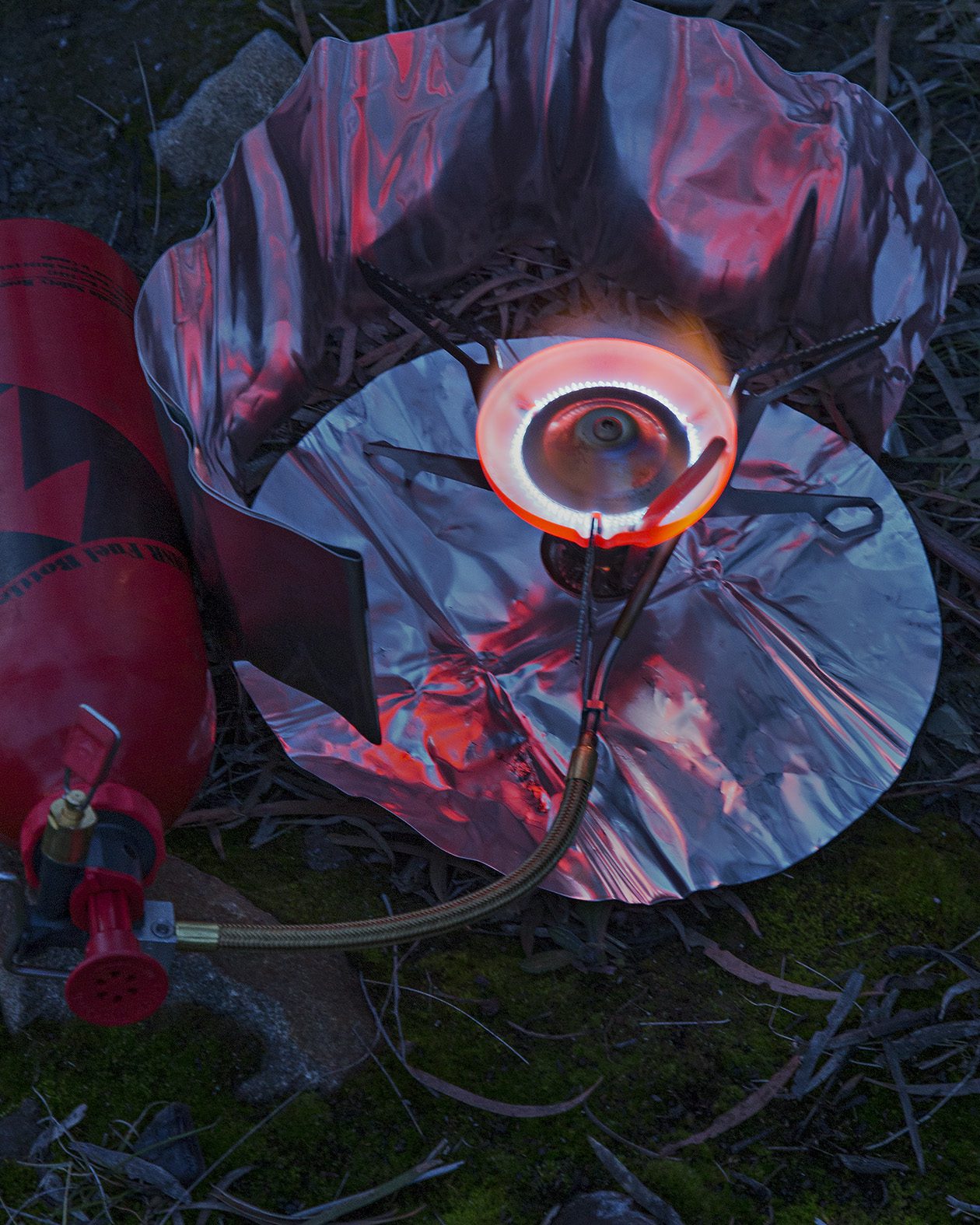
Mug
A lightweight enamel mug is my choice. I like the feel of the warm mug in my hands.
Knife
One small knife in the party is enough. I prefer the French Opinel. The carbon steel blade stays very sharp for the whole trip.
Spoon
You can eat everything with a spoon and save the weight of carrying a knife and a fork.
Water bottle
I use a Lipton’s Tea plastic bottle. It is super light and very strong.
Water bucket
Sea to Summit makes a water bucket that would fit into a matchbox.
First aid kit
Speak to your local pharmacist or first aid provider to determine what to take. There are some unique considerations for remote expeditions. One key consideration for bushwalking is blister management. I also take salt to sprinkle on leeches, which makes them drop off.
EPIRB
An EPIRB is an Emergency Position Indicating Radio Beacon. There is no phone range in South West Tasmania. It is essential to have an EPIRB within the group to call for help if needed.

Camera
My current bushwalking camera is a lightweight Fuji XE model with an electronic viewfinder. It is lightweight (600 gms). The 16-megapixel image quality is superb, and the lenses are world-class.
Clothing
I carry lightweight thermals, two pairs of socks, and one change of underwear. One pair of lightweight trousers, one pair of shorts, one long sleeve shirt, one short sleeve shirt, 1 Polartec jacket or down jacket, a balaclava and gloves. I also take a very lightweight pair of camp shoes.
You must keep one set of clothes as a dry set for the entirety of the trip. If your walking clothes and socks are wet from the previous day, you put them back on the next morning.

Waterproof jacket
This is an essential item. Short waist-length ski jackets are unsuitable. The jacket needs to be long enough to cover your bum; otherwise, you can get very wet. The sleeves need to be long enough to cover your hands in cold, windy conditions, and a visor is essential to keep the hood in place. I usually buy my jackets one size bigger than I normally wear to allow for extra coverage in wet conditions.
Food
With food, the weight adds up very quickly, and each choice can make a considerable difference to the overall weight of your pack.
For breakfast, I eat porridge with sultanas and brown sugar. Milk is made from milk powder. It has plenty of energy and warms you up in the morning.
Lunch is salami and cheese on a biscuit. It is fast to prepare, lasts a week without refrigeration and gets some good protein and calories in.
If I need a snack, I’ll have a handful of scroggin along the track. Scroggin is a fruit and salted nut mix, sometimes with chocolate-coated sultana thrown in for good measure. I usually carry a protein or muesli bar or two for days when I need a little extra.
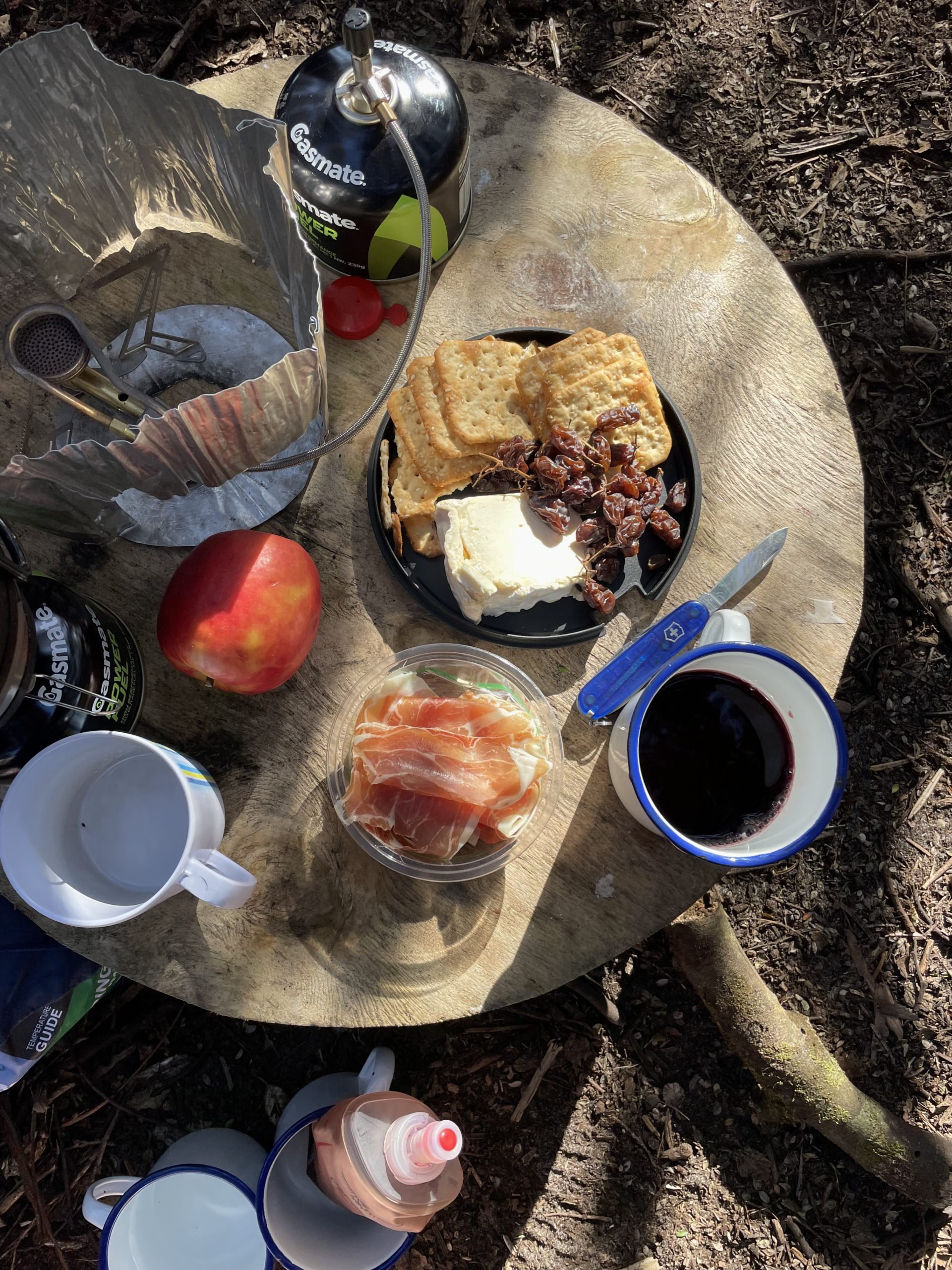
For dinner, I choose to eat dehydrated food. I either buy these or make them myself. Dehydrating food at home is relatively easy with a dehydrator. Still, I find that some homemade meals take longer to rehydrate than bought ones which is a consideration when you’re tired and hungry after a long day on the track. I take a packet of soup for each day. They are light and fast to make on the track on a cold day or when you arrive at camp.
After dinner, I like a tipple of whisky. This is the one concession I make on weight. It is a non-negotiable item!
Make sure to remove the packaging from items like biscuits. You don’t need to carry the biscuit box; the inside wrapping is fine.
This content was first published in my book From Cape to Cape – Tasmania’s South Coast Track, which is available in the store.



